Galena is one of the earliest minerals used by humans and has been mined and processed since ancient times. It is a very important sulfide mineral because it serves as the main ore of lead and is often mined for silver.
The use of lead has driven the development of batteries, televisions, computers, ceramics, and construction. It offers many benefits but also raises some serious health concerns. Read this blog to learn about this old and dangerous mineral.
Galena Properties
- Galena meaning: Named by Pliny the Elder in 77-79 from the Greek "galene" meaning "lead ore".
- Galena chemical formula: PbS
- Galena composition: The main mineral is lead sulfide, with a lead content of 86%. Silver is its most common gauge mineral, followed by copper and zinc, and sometimes gold, iron, cadmium, antimony, bismuth, arsenic, and selenium.
- Galena color: Lead gray to white, from light to dark, with a shade of blue
- Galena cleavage: Perfect in three directions, forming cubes; brittle nature
- Morphology: Galena cubes, octahedrons, cube-octahedron combinations and rarely dodecahedrons
- Galena hardness: 2.5 on Mohs scale (can be easily scratched by a fingernail or penny)
- Specific gravity: 7.4 - 7.6 (feels ‘heavy’, even for a metallic mineral)
- Galena luster: Metallic, Dull
- Galena streak: Dark gray to black
- Is galena magnetic: Normally no. If galena contains sphalerite or iron purities (such as hematite and magnetite), it will have a magnetic property.
- Galena crystal System: Cubic, hexaoctahedral
- Galena mineral group: Galena group
- Galena mineral/Lead-zinc ore price: The price of Galena depends on its silver and lead amount. The lead is worth 1, 720 USD in one ton of galena. The silver is worth 7, 292 USD. The price of lead-zinc ore is 2, 300 USD per ton and you can read Market Insider for the latest lead price.
How is galena formed?
Galena is found in igneous and metamorphic rocks in medium or low-temperature hydrothermal veins. In sedimentary rocks, it occurs as veins, breccia cement, isolated grains and as replacements for limestone and dolostone.
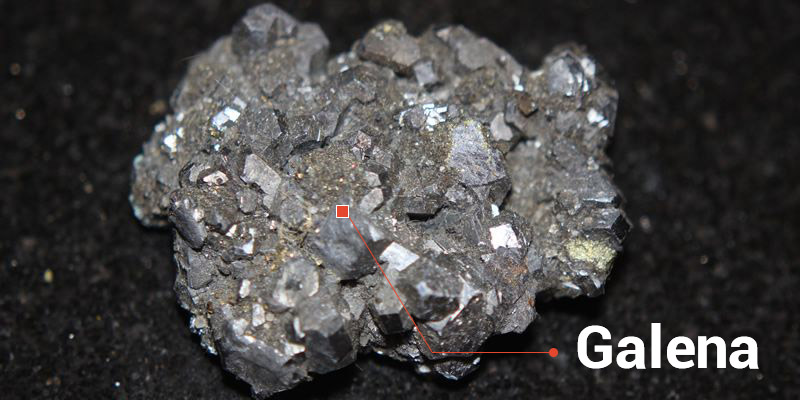
Galena ore is often associated with gangue minerals, such as pyrite, sphalerite, chalcopyrite, magnetite, quartz, carbonates (calcite, dolomite, siderite), fluorite, barite, and others.
Some galena mines contain as much as 1% silver, a byproduct that far surpasses the main lead ore in revenue. Silver is 364 times more valuable than an equal weight of lead. This argentiferous galena derived almost entirely from hydrothermal fluids, is the silver ore. Galena in lead-zinc deposits contains little silver.
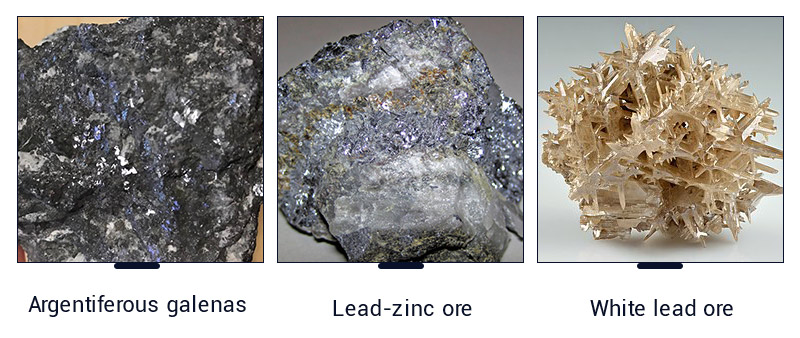
Galena is also often mixed with copper. After weathering, it becomes white lead ore and Lead alum.
Where is galena found?
The world's largest known galena mine is the Mississippi Valley type deposits in Missouri, USA. It occurs most notably as lead-zinc ore, which has 30 million tons of lead reserves.
Yunnan, Guangdong and Qinghai (China), Cornwall (UK), Freiberg (Germany), and Broken Hill (Australia) are also galena producers.
Currently, about 240 mines in more than 40 countries produce lead. The world's annual lead production exceeds 10 million tons. Australia is the world's leading producer of lead as of 2021, followed by China, the United States, Mexico, Sweden, Peru, Russia, Canada, and Morocco.
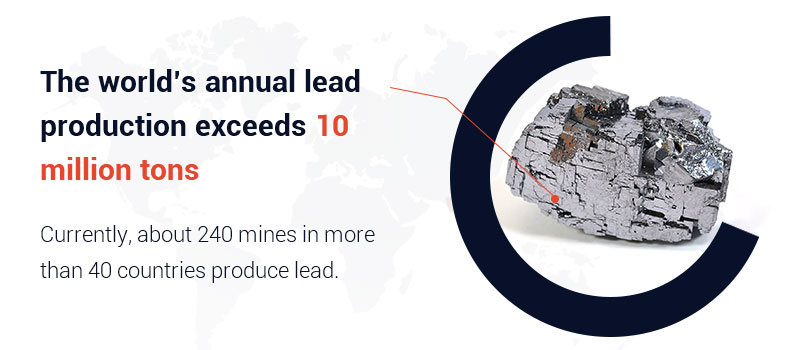
The old history of galena mining
Galena has been used throughout ancient times for different reasons, but it's mainly used for smelting.
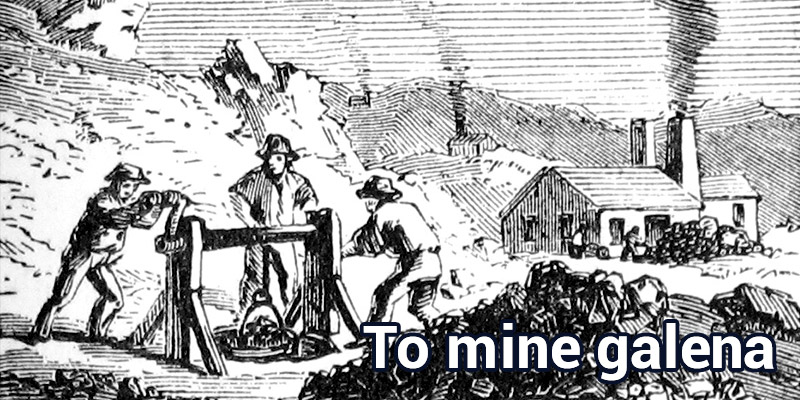
- One of the earliest galena uses was as kohl. The Ancient Egyptians used galena powders to rub around their eyes to reduce the glare of desert sun and repel flies.
- In ancient Rome, people gave it this academic name. They smelted down galena ore to make water pipes and public baths.
- The Ancient Babylonian and Assyrian people used galena as a construction material.
- Chinese empires used galena to make coins as the currency.
- After the invention of cement movable type printing in the Northern Song Dynasty, the Germans used galena to invent alloy movable type printing.
- In the war, people used galena to make weapons. Lead paint can remove the barnacles attached to the bottom of ship to protect the ship from breaking through the waves.
- In the early days of wireless, galena stone was used as the semiconductor in crystal radios. It became part of a point-contact diode used to detect radio signals.
What is galena used for?
After the processing of galena rock, lead is widely applied in making batteries, alloys, ceramic, stained glass, sheets, paint, pipes, cosmetics, etc. Lead is the world's claimed industrial metal and the demand for it outstrips the supply.
1. Lead-acid batteries
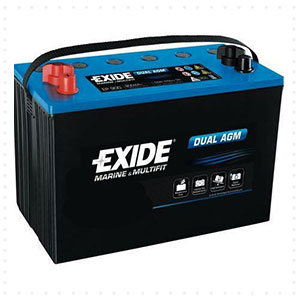
Most lead is made into lead-acid batteries, which were the first rechargeable batteries for commercial use. In America, 80% of the lead is used to make car batteries every year. A battery contains about 20 pounds of lead and must be replaced every 4-5 years.
The batteries are also used as standby power supplies for computer networks and communication facilities.
2. Radiation shielding
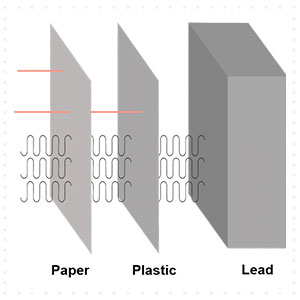
Lead can absorb X-rays, making radiation difficult to pass through. Thus it is used as a protective wall against radiation, such as a device for storing nuclear waste. It can effectively prevent nuclear leakage.
The screen of electronics, such as computers, TV and cellphones, use lead to protect us from radiation and enhances the image.
X-rays and imaging diagnostics (CAT scans) use sophisticated lead shielding to protect patients and healthcare professionals. Special lead-lined rooms are made for life-saving radiation treatments.
3. Galena pottery
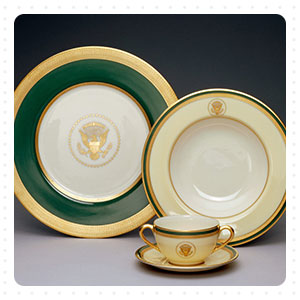
Throughout the ages, one of the world's finest potteries is the galena pottery. It is glazed with lead, including the official White House dinnerware in many administrations.
4. Stained glass

Stained glass pieces of cathedral windows are held together by malleable lead cames, which can be relied on to endure for centuries. Many colors were created with lead and the finest stemware is made from lead crystal.
5. Measurement instrument
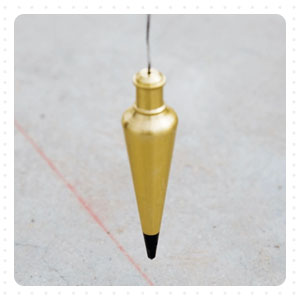
Due to the good ductility and toughness, lead is used for making the measurement instrument plumb in construction. Some words such as "plumbing","plumber", "plumb", and "plumb-bob", their roots are derived from the Latin "plumbum" (lead).
Is galena toxic or dangerous?
Galena contains toxic lead, which has a negative impact on human life and production.
Lead has a negative effect on human life and production. Excessive lead dust causes plumbism, which is harmful for human organs and tissues like heart, bones, intestines, kidneys, reproduction, and nervous system.
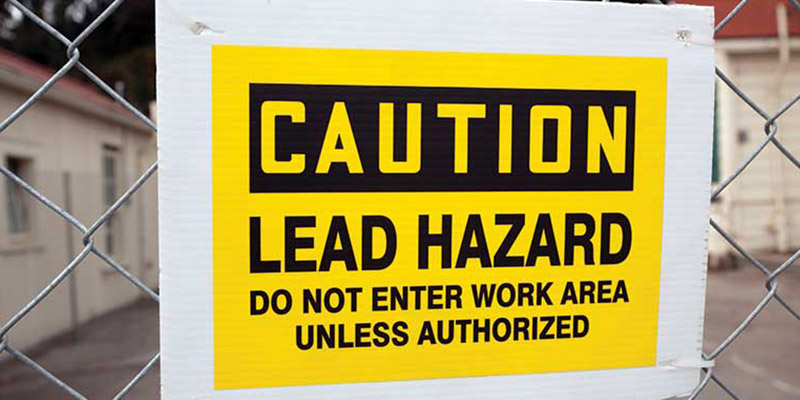
Therefore, always wash your hands after handling it. Avoid inhaling dust when you are crushing the galena mineral. In the iron ore provided for smelting, if lead exceeds the allowable content requirement, the furnace lining will be damaged and the furnace life will be shortened.
Many uses of lead and lead compounds (ceramic, cosmetics, glass, etc.) have been discontinued or significantly reduced over the past few decades in response to health concerns.
Many schools removed galena from student mineral kits and replace it with a mineral with a lower level of concern.


